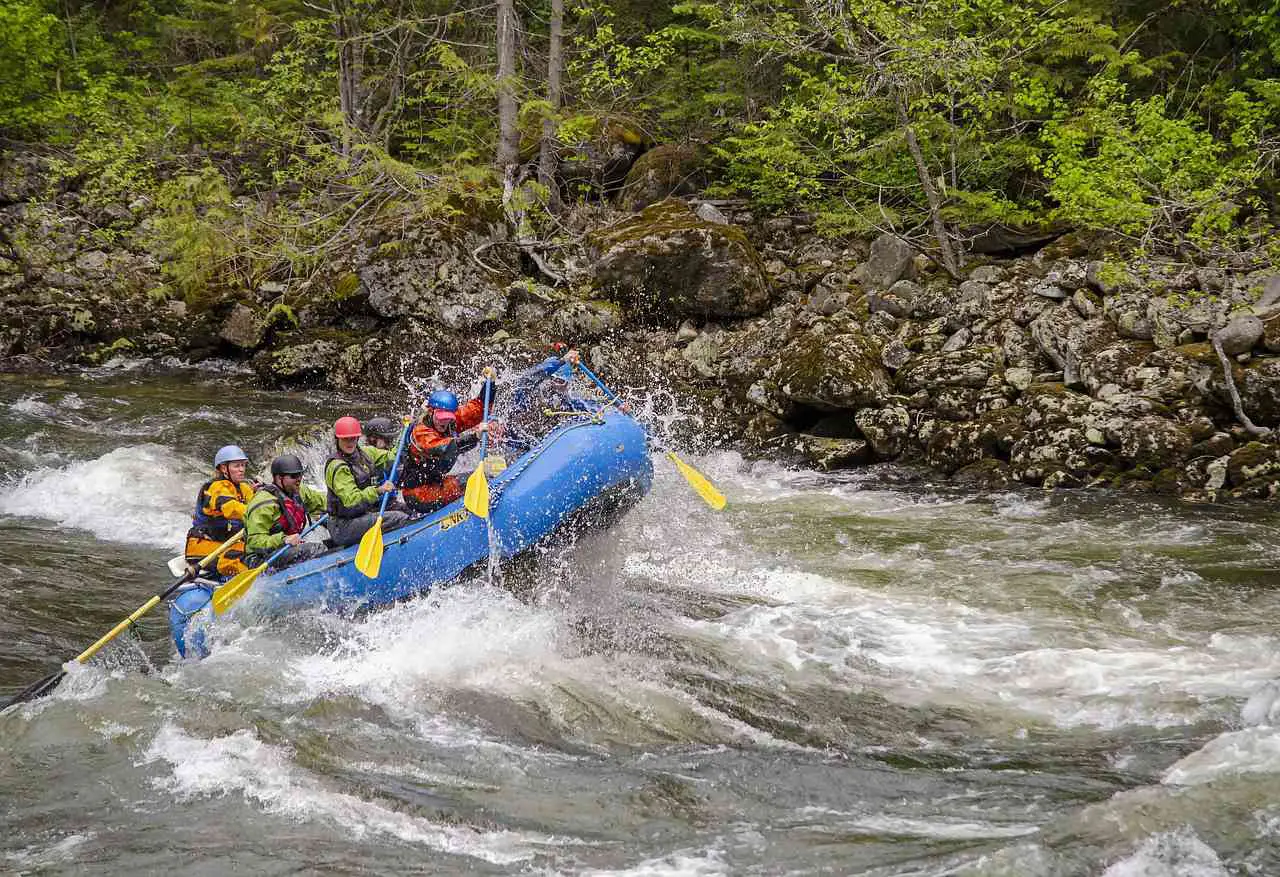If you’re interested in extreme sports, you might be starting to wonder about whitewater sports and how dangerous they are. Anyone who likes this sort of sport may be asking is whitewater rafting dangerous?
In answer to that question, any sport of this nature does carry some inherent risks. However, it may not be as dangerous as its reputation suggests. Many companies offer it as a popular outdoor pursuit, and if done properly with good safety precautions, it can be pretty safe.
Is Whitewater Rafting Dangerous
Is White Water Rafting Safe For Nonswimmers?
The danger of any water sport will climb significantly for non-swimmers. If you cannot swim, you are much more likely to get into difficulty if you fall in.
You will be given a life jacket if you’re doing this with a company. However, you shouldn’t wholly depend on your life jacket to keep you safe, especially in strong currents. The buoyancy of the jacket may not be enough to make you float. You might have to swim to the side or with the current to get to a calmer patch of river.
If you cannot swim and you end up falling off the boat, you may find it difficult to get back to shore. You might also feel less safe overall, which will make the activity less enjoyable. While this activity is often done in shallow rivers, not being able to swim can be dangerous. This is particularly true on difficult courses.
If possible, it is better to do some swimming practice before you partake in this activity. You do not need to become a strong swimmer, but being able to swim enough to direct yourself is a good idea.
Anyone who cannot swim should think carefully before joining this activity. Check that the course is reasonably easy and discuss the implications with the experts before you book the activity so you know what to expect.
Are River Rapids Dangerous?
This will depend to a large extent on the river rapids in question. Some rapids are certainly dangerous, especially for inexperienced people. Others are less so, even for beginners.
You should choose rapids that are suitable for your level of experience. If you are going with an experienced group, more difficult rapids may be suitable, but don’t get out of your comfort zone. There is an international standard that grades rapids so you can find out what is suitable no matter where you are.
A level two is often good for beginners.
What makes rapids more dangerous? Fast currents are particularly dangerous, and steep areas are even more so. If there are narrow patches or places with lots of boulders, the difficulty will increase. It is important to assess all of these factors in advance.
You should also look at whether there are any waterfalls in the course. Think about the height of the drop and the skill of the crew members before tackling waterfalls.
Equipment For White Water Rafting
You might be wondering what you need for this activity. Many companies will supply equipment for you. You should expect a crash helmet to protect your head from overhangs or bumps if you fall out of the boat.
You should be given a life jacket to help you stay afloat. A waterproof bag is also often provided to keep belongings safe. A safety whistle is another good thing to have, and you should take your own if they aren’t supplied.
Obviously, you will need a craft and paddles, which should be provided by the company. If you are going with friends, ensure the craft is suitable. You must always check that they are knowledgeable and experienced before agreeing to go white water rafting with friends.
What to wear will depend a little on the weather. A wetsuit is often useful, or you can choose moisture-wicking, light clothes. Shoes should be comfortable and well-fitted, fastened to your feet so they won’t come off if you fall. Protective footwear that fully covers the foot is important.
Do not wear cotton, as this tends to absorb and hold onto moisture, and can be slow to dry. It is often a good idea to carry a spare set of clothes. You should definitely have some warm things to put on if you get wet or chilled. If possible, take something warm to wear during the activity, and a separate outfit for afterward.
If you wear glasses, make sure you have a strap so that they won’t be lost if they fall off your face. You may also want to take sunscreen, a sun hat, a towel, water bottles, and snacks. If you are going in cool weather, take a woolly hat, gloves, and dry thermals to put on if you get chilled.
Is There A Weight Limit To White Water Rafting?
Not exactly, but weight needs to be taken into consideration. In general, most companies don’t provide weight limits, but they do require participants to be physically fit in order to prove they can be safe on the water.
You will need to be able to wear the safety equipment provided, so you should check with companies in advance if you are overweight. Make sure they have equipment that will fit you, particularly the life jacket.
Think about your ability to contribute to the course. This activity is often hard work and will involve a lot of paddling. If you aren’t fit enough to help, you may not enjoy it.
What Do You Do If You Fall Out Of White Water Rafting?
Perhaps one of the biggest aspects of “is whitewater rafting dangerous” is what to do if you fall out. Companies will offer their own guidelines on this, but here are some suggestions.
- Grab onto the raft until someone can pull you back on.
- Face the raft so you can be pulled on more easily.
- Lift your feet to the surface to avoid them getting tangled in the riverbed. This is one of the biggest dangers, so get your toes above the surface fast. Face your feet downstream.
- If you have lost hold of the raft, wait for a rope or paddle to be extended so you can get back on.
10 Safety Tips For White Water Rafting
Things you should and shouldn’t do while rafting:
- Don’t ever stand up in the rapids. Swim to the shore instead, or you could get badly injured.
- Follow your guide’s instructions.
- Always wear a flotation device that will keep you up if you get too tired to swim.
- Keep your hands on the “T” grip of the paddle.
- Do not panic – easier said than done, but panicking will bring you more trouble than help.
- Check out the company and ask questions about their audits and safety procedures before you book.
- Build up to difficult courses slowly.
- Never go alone or without at least some experienced members.
- Only raft during the day unless on a specifically organized night trip with a reputable company.
- Know your own limits, exercise in advance, and do not push yourself beyond safe points.
Summary
So, to answer the question “is whitewater rafting dangerous?”, it can be if people approach it carelessly and do not follow safety procedures. However, it has quite low accident figures compared with other sports such as horse riding.
All sports carry a risk of injury. However, if you follow instructions and wear the appropriate gear, white water rafting can be fairly safe.

